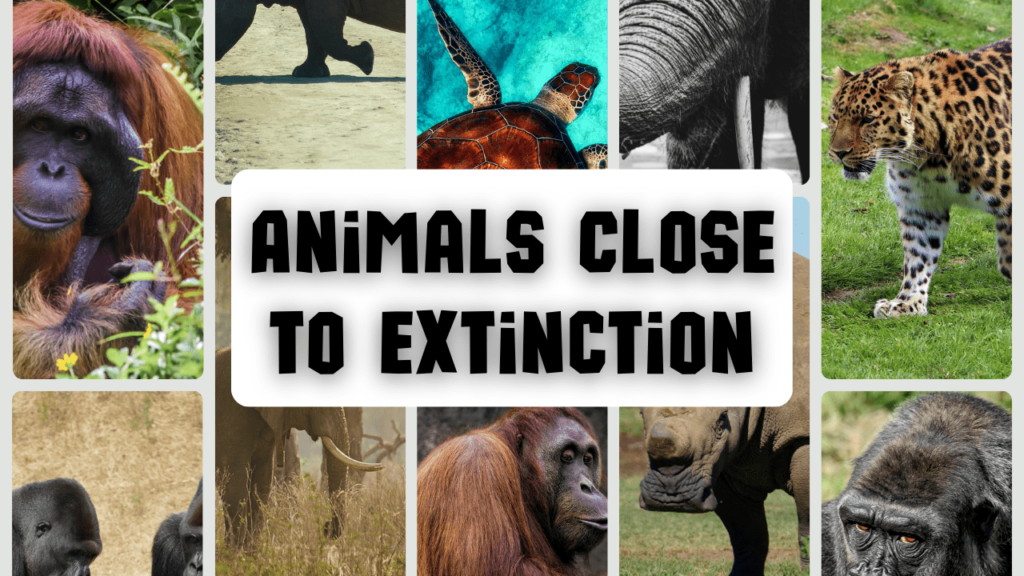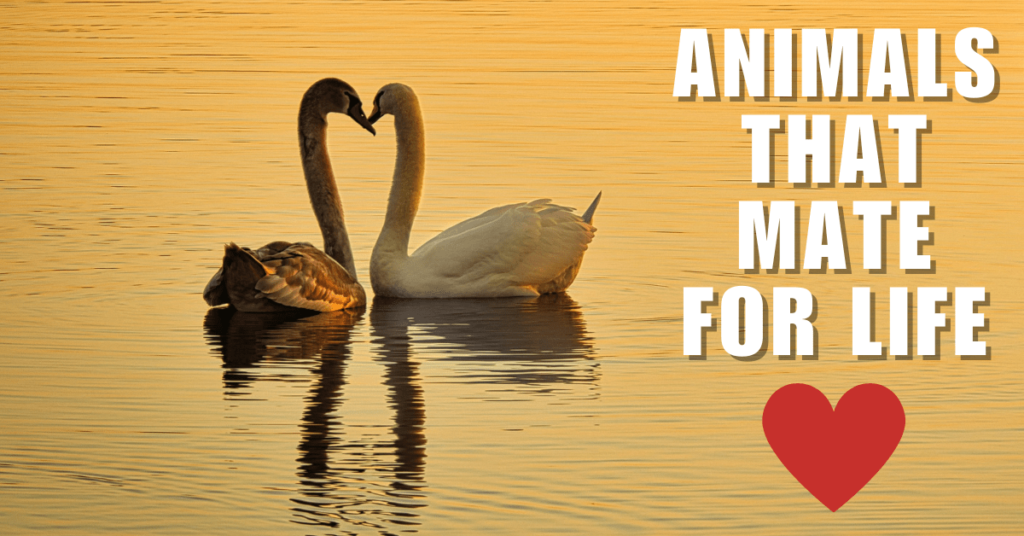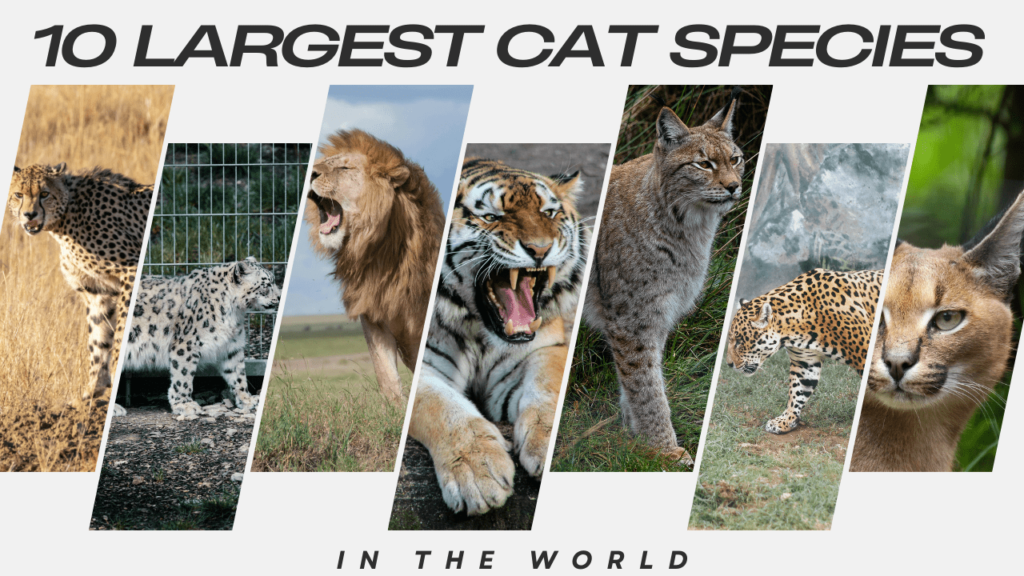As the world continues to change due to human activities, the survival of many species hangs in the balance. Today, there are countless animals close to extinction, teetering on the edge of disappearing forever. These species, categorized as critically endangered animals, face threats from habitat destruction, climate change, poaching, and other human-induced factors. This article will explore some of the nearly extinct animals, highlighting their struggles and the urgent need for conservation efforts.
Understanding Animals Close to Extinction
“Animals close to extinction” refers to species that are at such high risk of disappearing that their populations have dwindled to alarmingly low numbers. These are the animals that appear on the brink of vanishing, with only a few remaining in the wild. The International Union for Conservation of Nature (IUCN) maintains a “Red List” that categorizes species based on their extinction risk, with those on the “Critically Endangered” list being the most at risk.
Understanding these animals’ unique traits and the factors driving them towards extinction is crucial for crafting effective conservation strategies. From habitat destruction and climate change to poaching and pollution, the threats are multifaceted and require a coordinated global response. In exploring their stories, we can foster greater awareness and inspire action to protect these vulnerable species and ensure that their extraordinary contributions to our planet’s biodiversity are preserved for future generations.
Here’s a list of Extinct Animals that have sadly vanished forever, leaving us only with memories of their existence. However, not all is lost. The following species are still with us and can be preserved if we act decisively.
Top 20 NEARLY EXTINCT ANIMALS:
Here, we delve into a list of animals close to extinction, highlighting their current status and the factors contributing to their critical condition.
1. African Forest Elephant
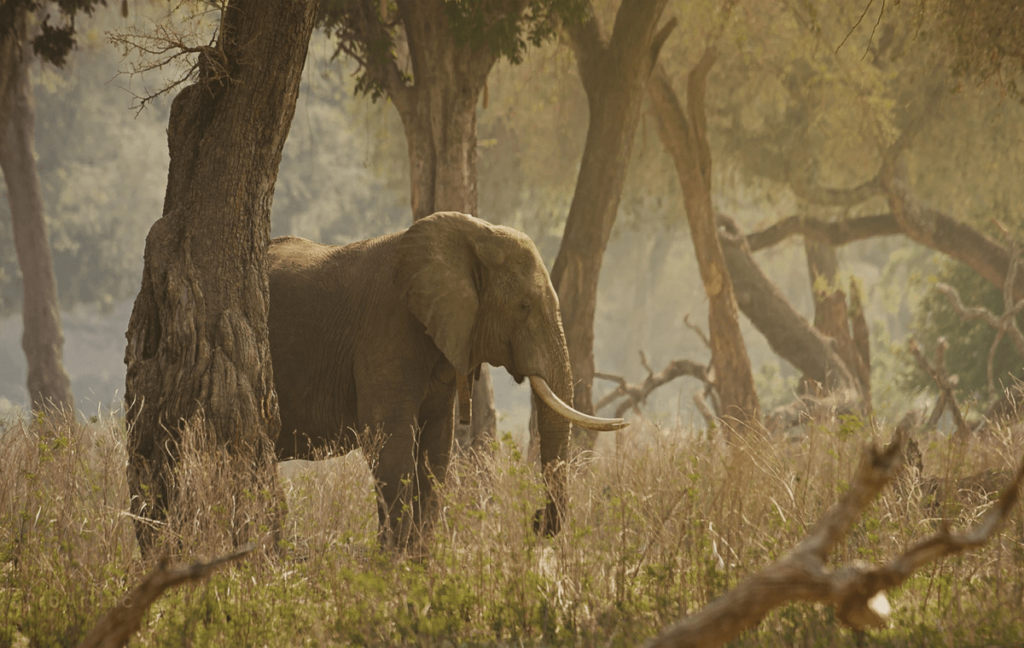
Description: The African Forest Elephant is a smaller species of elephant found in the dense rainforests of West and Central Africa. It is distinguished by its straight tusks and more rounded ears compared to the African Savanna Elephant. African Forest Elephants play a crucial role in their ecosystem by dispersing seeds and maintaining the forest structure.
- Common Name: African Forest Elephant
- Scientific Name: Loxodonta cyclotis
- Family Name: Elephantidae
- Type: Mammal
- Habitat: Rainforests of West and Central Africa
- Diet: Fruits, leaves, bark, and other vegetation
- Current Status: Fewer than 200,000 individuals in the wild
- Reasons for Near Extinct: Poaching for ivory and habitat loss due to agriculture, logging, and human encroachment are the main threats to the African Forest Elephant.
- Conservation Efforts: Anti-poaching initiatives, habitat protection, and international bans on ivory trade are critical to preserving the African Forest Elephant population.
In our previous article, we have explaind How Strong Is an Elephant
2. Amur Leopard
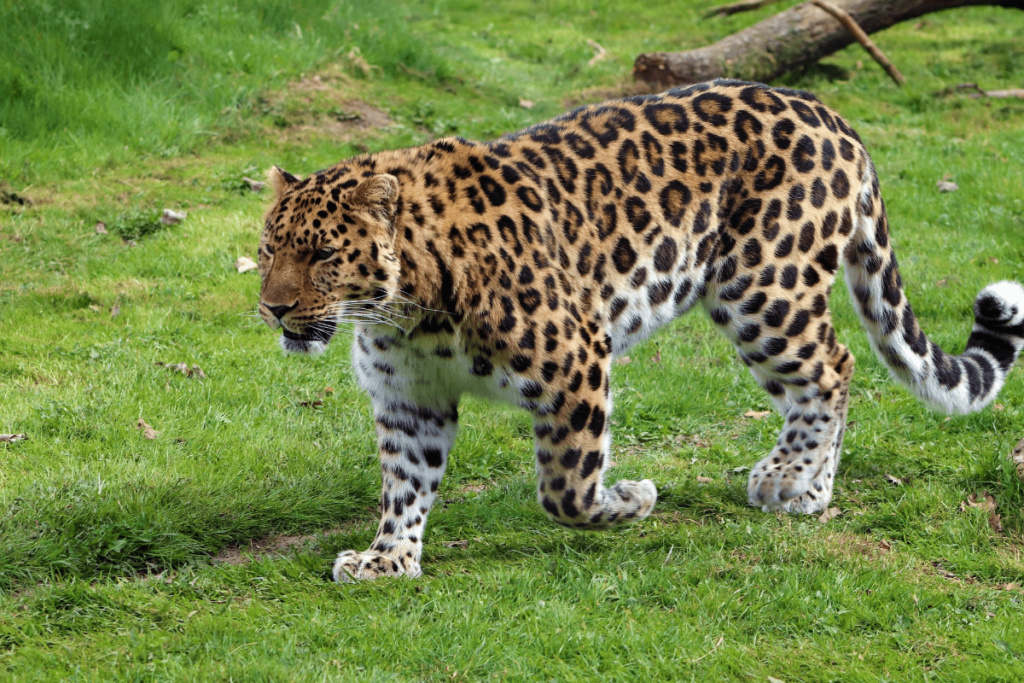
Description: The Amur Leopard is one of the rarest big cats in the world, residing in the temperate forests of the Russian Far East and northeastern China. Known for its striking rosette-patterned coat and incredible stealth, the Amur Leopard is a solitary and elusive predator, primarily hunting deer and hares.
- Common Name: Amur Leopard
- Scientific Name: Panthera pardus orientalis
- Family Name: Felidae
- Type: Mammal
- Habitat: Temperate forests of the Russian Far East and northeastern China
- Diet: Deer, hares, and other small mammals
- Current Status: Fewer than 100 individuals in the wild
- Reasons for Near Extinct: Poaching for their beautiful fur and habitat loss due to deforestation and human development have driven the Amur Leopard to the brink of extinction.
- Conservation Efforts: Strict anti-poaching laws, habitat preservation, and breeding programs in captivity are vital to the survival of the Amur Leopard.
Here is a List of Top 10 Largest Cat Species in the World
3. Black Rhino

Description: The Black Rhino is a critically endangered species found in various regions across Africa. Despite its name, the Black Rhino is actually gray. It is known for its pointed upper lip, which it uses to grasp leaves and twigs from trees and bushes.
- Common Name: Black Rhino
- Scientific Name: Diceros bicornis
- Family Name: Rhinocerotidae
- Type: Mammal
- Habitat: Savannas, grasslands, and tropical bushlands across Africa
- Diet: Leaves, branches, twigs, and shrubs
- Current Status: Approximately 5,600 individuals in the wild
- Reasons for Near Extinct: The Black Rhino has been severely impacted by poaching for its horn, which is highly prized in traditional medicine and as a status symbol.
- Conservation Efforts: Anti-poaching patrols, translocation to safer areas, and legal protection have been instrumental in stabilizing some populations of the Black Rhino.
4. Bornean Orangutan
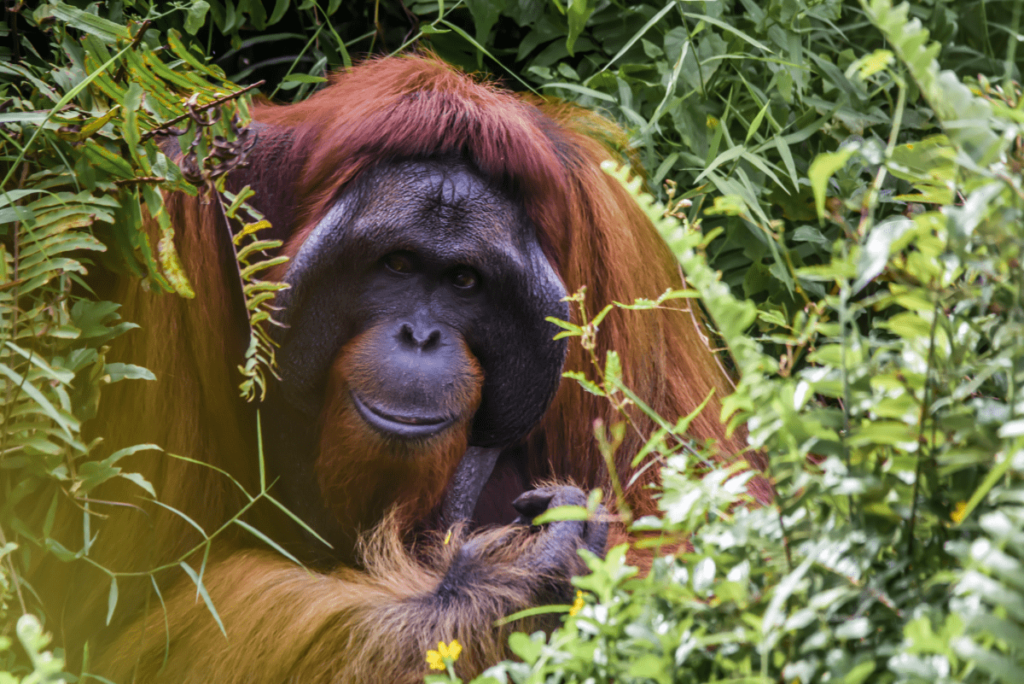
Description: The Bornean Orangutan is one of the three species of orangutans, native to the island of Borneo in Southeast Asia. It is known for its long arms, reddish-brown fur, and highly intelligent behavior. The Bornean Orangutan spends most of its life in the trees of tropical and subtropical rainforests, where it feeds on fruit, leaves, and bark.
- Common Name: Bornean Orangutan
- Scientific Name: Pongo pygmaeus
- Family Name: Hominidae
- Type: Mammal
- Habitat: Tropical and subtropical rainforests of Borneo, Southeast Asia
- Diet: Fruits, leaves, bark, and insects
- Current Status: Fewer than 104,700 individuals in the wild
- Reasons for Near Extinct: Deforestation for palm oil plantations, illegal logging, and hunting are the primary threats to the Bornean Orangutan.
- Conservation Efforts: Reforestation projects, anti-poaching laws, and the creation of protected areas are essential to preserving the Bornean Orangutan’s habitat and population.
5. Cross River Gorilla
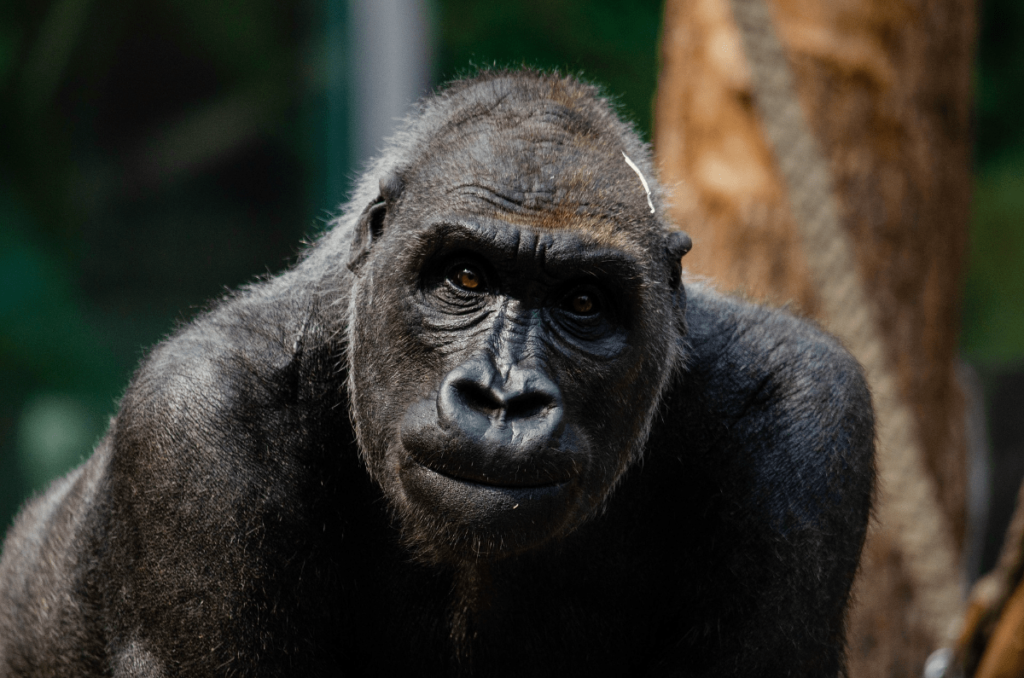
Description: The Cross River Gorilla is the most endangered subspecies of gorilla, found in a small mountainous region along the Nigeria-Cameroon border. Smaller and more reclusive than other gorilla species, the Cross River Gorilla lives in dense forests and is known for its shy nature.
- Common Name: Cross River Gorilla
- Scientific Name: Gorilla gorilla diehli
- Family Name: Hominidae
- Type: Mammal
- Habitat: Mountainous forests along the Nigeria-Cameroon border
- Diet: Fruits, leaves, and small insects
- Current Status: Fewer than 300 individuals in the wild
- Reasons for Near Extinct: Habitat destruction, hunting, and human encroachment have led to the severe decline of the Cross River Gorilla population.
- Conservation Efforts: Conservation initiatives include creating protected areas, anti-poaching patrols, and community-based conservation programs aimed at preserving the Cross River Gorilla.
6. Eastern Lowland Gorilla
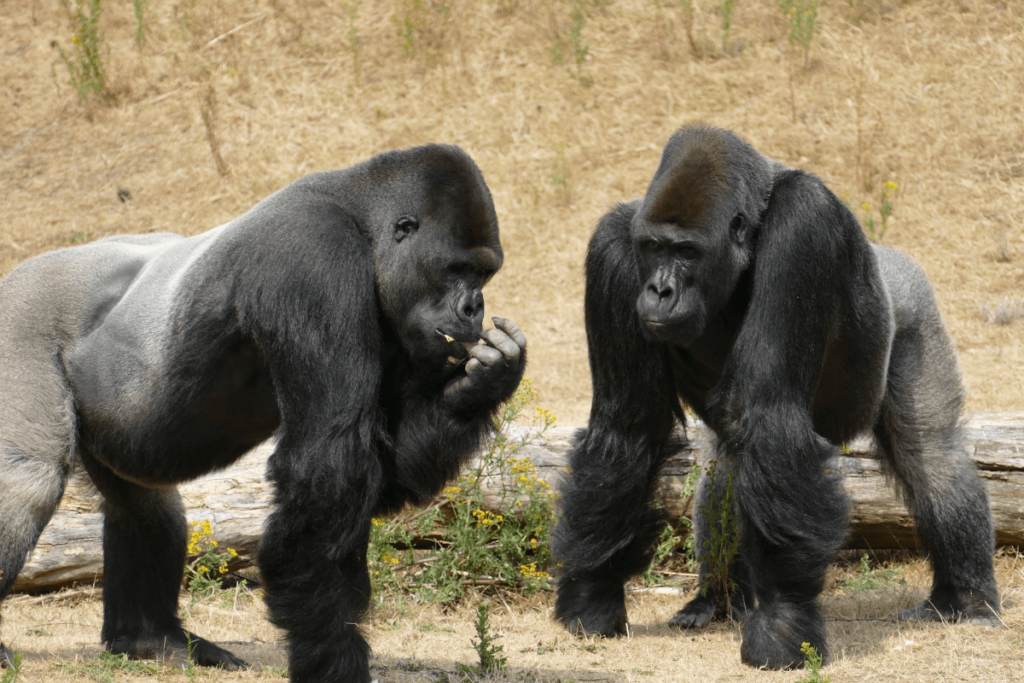
Description: The Eastern Lowland Gorilla, also known as Grauer’s Gorilla, is the largest of the four gorilla subspecies. Native to the mountainous forests of eastern Democratic Republic of Congo, this gorilla is known for its stocky build, large hands, and gentle nature.
- Common Name: Eastern Lowland Gorilla
- Scientific Name: Gorilla beringei graueri
- Family Name: Hominidae
- Type: Mammal
- Habitat: Mountainous forests of eastern Democratic Republic of Congo
- Diet: Fruits, leaves, and small insects
- Current Status: Fewer than 4,000 individuals in the wild
- Reasons for Near Extinct: Habitat destruction, poaching, and civil unrest in the region have contributed to the decline of the Eastern Lowland Gorilla.
- Conservation Efforts: Protection of key habitats, anti-poaching initiatives, and international efforts to stabilize the region are crucial for the survival of the Eastern Lowland Gorilla.
7. Hawksbill Turtle
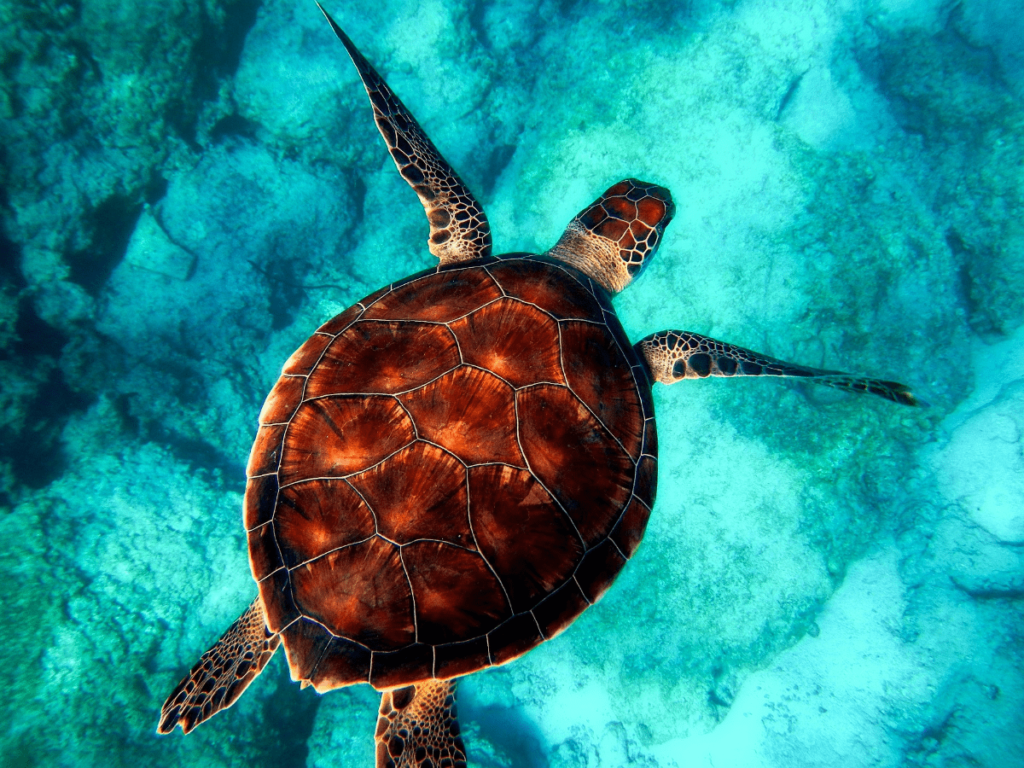
Description: The Hawksbill Turtle is a critically endangered sea turtle species known for its distinctive hawk-like beak and beautifully patterned shell. It is found in tropical coral reefs around the world, where it feeds primarily on sponges.
- Common Name: Hawksbill Turtle
- Scientific Name: Eretmochelys imbricata
- Family Name: Cheloniidae
- Type: Reptile
- Habitat: Tropical coral reefs around the world
- Diet: Sponges, jellyfish, and sea anemones
- Current Status: Fewer than 25,000 nesting females worldwide
- Reasons for Near Extinct: Illegal trade of its shell, which is highly prized for making jewelry and ornaments, as well as habitat loss and accidental capture in fishing gear, have drastically reduced the Hawksbill Turtle population.
- Conservation Efforts: International trade bans, protected nesting sites, and initiatives to reduce bycatch in fisheries are essential for the survival of the Hawksbill Turtle.
8. Javan Rhino
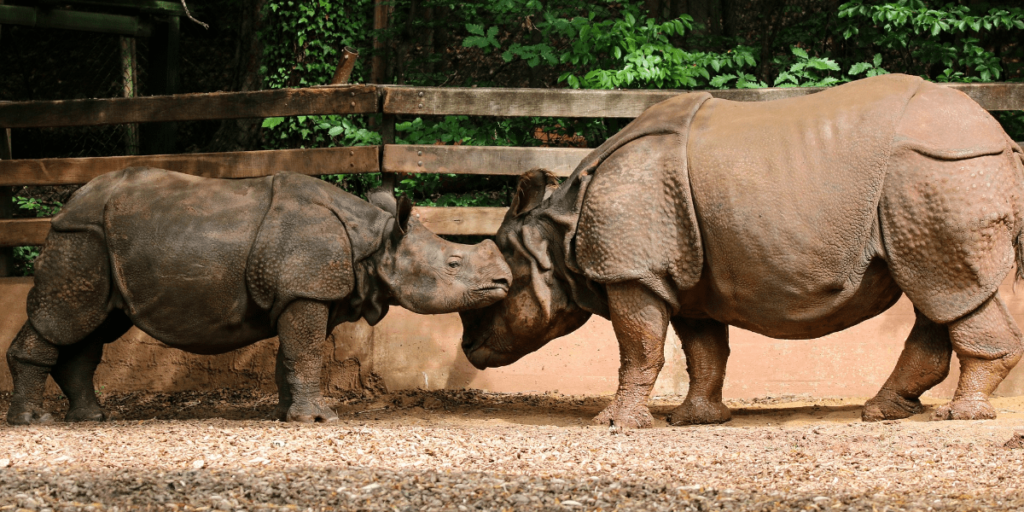
Description: The Javan Rhino is one of the rarest large mammals in the world. Found only in Ujung Kulon National Park on the island of Java, Indonesia, it is characterized by its single horn and rough, gray skin. The Javan Rhino is a solitary animal, inhabiting dense, lowland rainforests where it feeds on a variety of vegetation, including shoots, twigs, and fallen fruit.
- Common Name: Javan Rhino
- Scientific Name: Rhinoceros sondaicus
- Family Name: Rhinocerotidae
- Type: Mammal
- Habitat: Ujung Kulon National Park, Java, Indonesia
- Diet: Shoots, twigs, fallen fruit
- Current Status: Approximately 74 individuals in the wild
- Reasons for Near Extinct: Habitat loss due to agricultural expansion and poaching for its horn, which is highly valued in traditional medicine, are the primary threats to the Javan Rhino.
- Conservation Efforts: Strict protection within Ujung Kulon National Park, habitat restoration, and anti-poaching measures are critical to the Javan Rhino’s survival. International collaboration and funding are also crucial in maintaining these efforts.
9. Orangutan
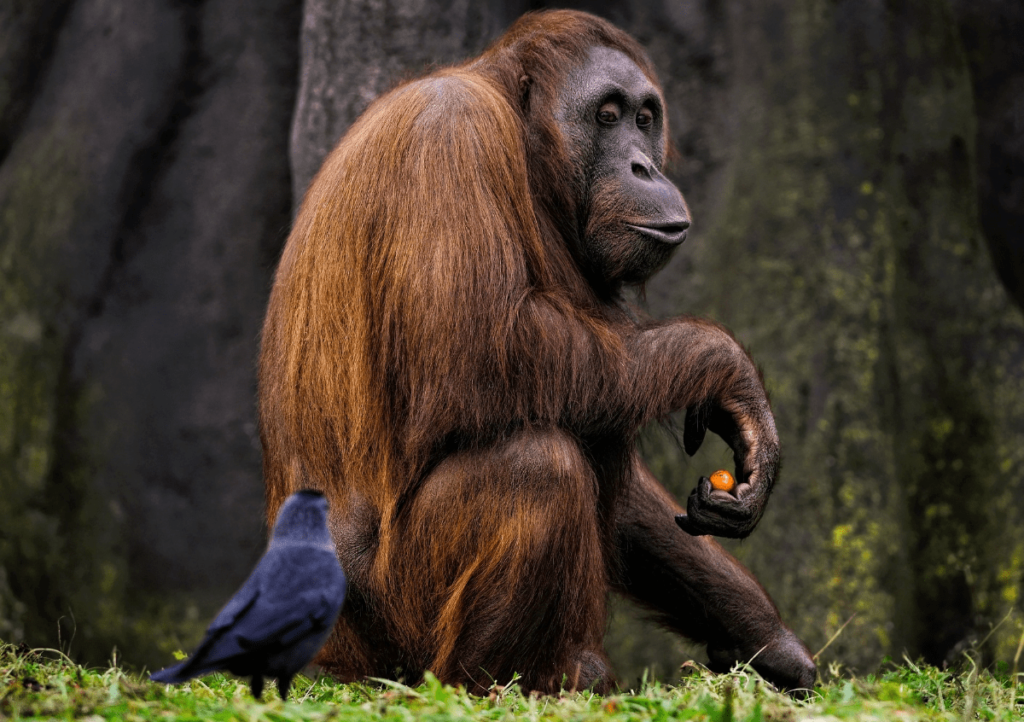
Description: Orangutans are highly intelligent great apes native to the rainforests of Borneo and Sumatra. They are known for their reddish-brown hair and long arms, which they use to move through the trees. Orangutans are primarily solitary and spend most of their time in the trees, feeding on fruits, leaves, and bark.
- Common Name: Orangutan
- Scientific Name: Pongo spp.
- Family Name: Hominidae
- Type: Mammal
- Habitat: Tropical rainforests of Borneo and Sumatra
- Diet: Fruits, leaves, bark, and insects
- Current Status: Approximately 104,700 Bornean and 7,500 Sumatran Orangutans in the wild
- Reasons for Near Extinct: Deforestation for palm oil plantations, illegal logging, and hunting are the primary threats to the Orangutans.
- Conservation Efforts: Reforestation projects, anti-poaching laws, and the creation of protected areas are essential to preserving the Orangutans’ habitat and population.
10. Saola
Description: The Saola, also known as the Asian Unicorn, is one of the world’s rarest and most enigmatic animals. Discovered only in 1992, it lives in the Annamite Mountains along the border of Vietnam and Laos. The Saola is known for its two parallel horns and is believed to be related to cattle.
- Common Name: Saola
- Scientific Name: Pseudoryx nghetinhensis
- Family Name: Bovidae
- Type: Mammal
- Habitat: Annamite Mountains, Vietnam and Laos
- Diet: Leaves, stems, and grasses
- Current Status: Fewer than 100 individuals in the wild
- Reasons for Near Extinct: Hunting and habitat loss due to agriculture and infrastructure development have pushed the Saola to the brink of extinction.
- Conservation Efforts: Efforts to save the Saola include protected areas, anti-poaching initiatives, and breeding programs in captivity, though much remains unknown about this elusive species.
11. Sumatran Elephant
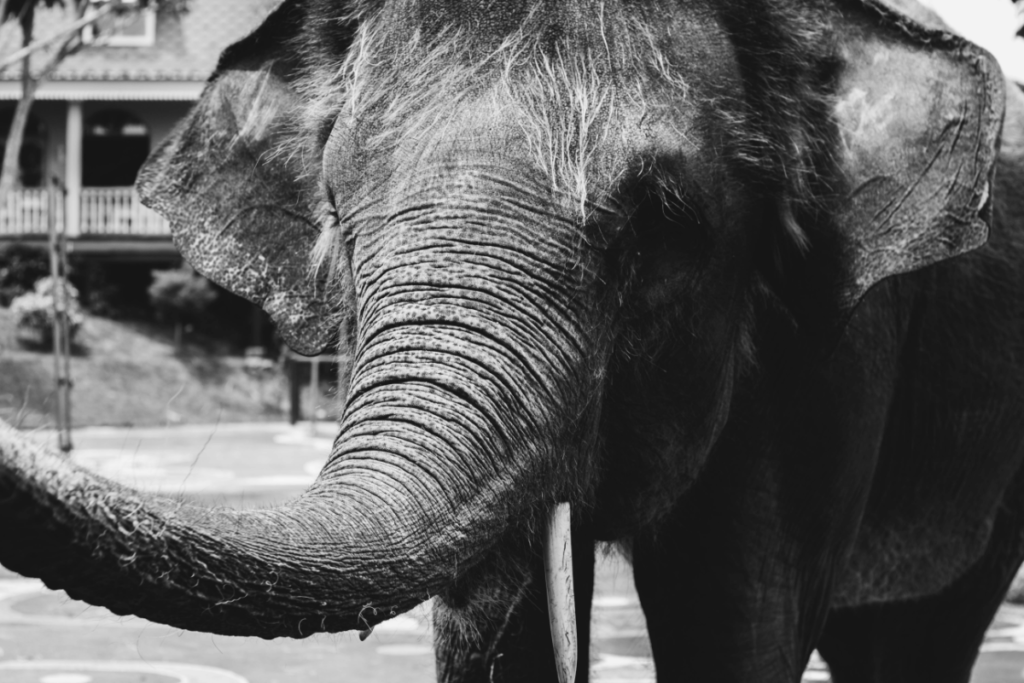
Description: The Sumatran Elephant is one of the three recognized subspecies of the Asian elephant. These elephants are smaller than their mainland relatives, with distinct features like smaller ears and lighter skin. They inhabit the lowland forests of Sumatra, Indonesia.
- Common Name: Sumatran Elephant
- Scientific Name: Elephas maximus sumatranus
- Family Name: Elephantidae
- Type: Mammal
- Habitat: Lowland forests in Sumatra, Indonesia
- Diet: Herbivore; consumes grasses, leaves, fruits, and bark
- Current Status: Approximately 2,400-2,800 individuals left
- Reasons for Near Extinct: Habitat loss due to deforestation and illegal poaching for ivory
- Conservation Efforts: Conservation strategies include habitat protection, anti-poaching measures, and captive breeding programs.
12. Sumatran Orangutan
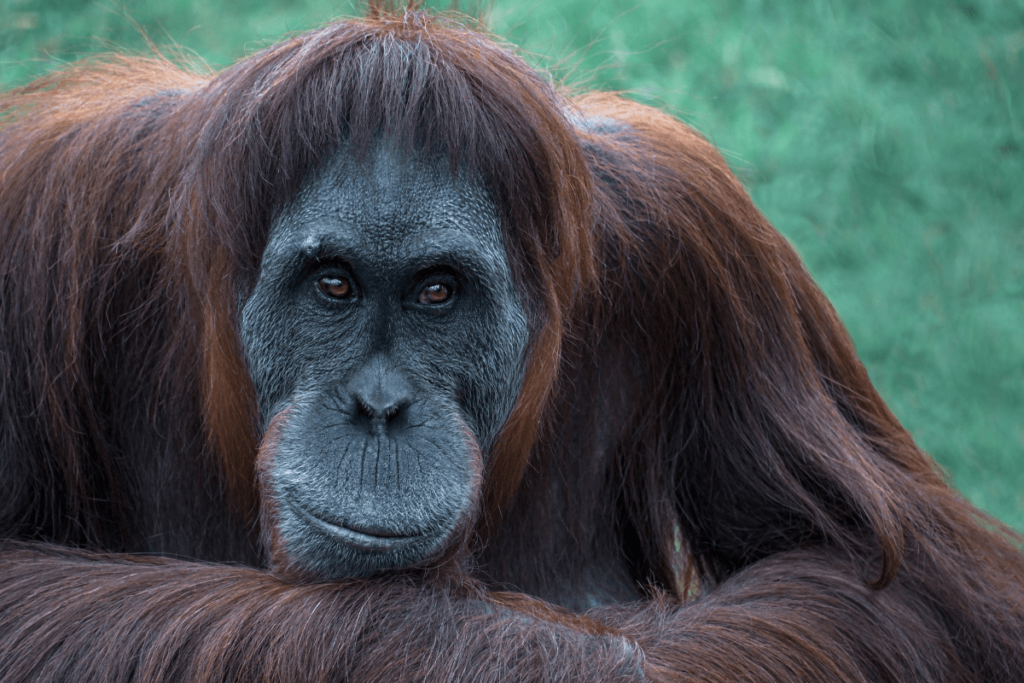
Description: The Sumatran Orangutan is a critically endangered species native to the island of Sumatra. Known for its distinctive reddish-brown fur, the Sumatran Orangutan is more arboreal and has a more frugivorous diet compared to its Bornean cousin.
- Common Name: Sumatran Orangutan
- Scientific Name: Pongo abelii
- Family Name: Hominidae
- Type: Mammal
- Habitat: Tropical rainforests in Sumatra, Indonesia
- Diet: Primarily fruits, but also leaves, bark, and insects
- Current Status: Approximately 14,000 individuals left
- Reasons for Near Extinct: Deforestation for palm oil plantations and illegal hunting
- Conservation Efforts: Conservation efforts include habitat preservation, rehabilitation programs for orphaned orangutans, and awareness campaigns.
13. Sumatran Rhino
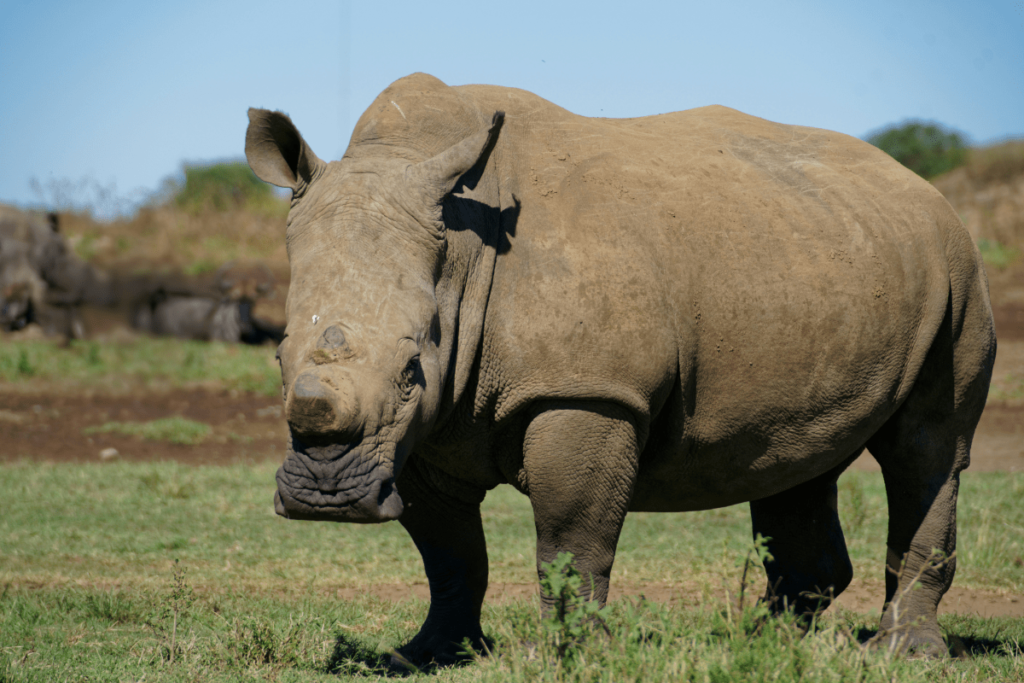
Description: The Sumatran Rhino is the smallest and hairiest of the five remaining rhino species. Native to the rainforests of Sumatra, this critically endangered species is the only Asian rhino with two horns.
- Common Name: Sumatran Rhino
- Scientific Name: Dicerorhinus sumatrensis
- Family Name: Rhinocerotidae
- Type: Mammal
- Habitat: Tropical rainforests and swamps in Sumatra, Indonesia
- Diet: Herbivore; eats a variety of plant material, including leaves, fruits, and twigs
- Current Status: Fewer than 80 individuals left
- Reasons for Near Extinct: Poaching for horns and habitat loss
- Conservation Efforts: Captive breeding programs, anti-poaching measures, and habitat restoration efforts are crucial for this species’ survival.
14. Sunda Tiger
Description: The Sunda Tiger, also known as the Sumatran Tiger, is the smallest surviving tiger subspecies, with unique black stripes that are closely spaced. It is native to the Indonesian island of Sumatra.
- Common Name: Sunda Tiger (Sumatran Tiger)
- Scientific Name: Panthera tigris sondaica
- Family Name: Felidae
- Type: Mammal
- Habitat: Lowland and montane forests in Sumatra, Indonesia
- Diet: Carnivore; preys on deer, wild boar, and occasionally cattle
- Current Status: Around 400-600 individuals left
- Reasons for Near Extinct: Habitat loss, human-wildlife conflict, and poaching
- Conservation Efforts: Protection of tiger habitats, anti-poaching patrols, and community-based conservation programs are being implemented to save this tiger.
15. Vaquita
Description: The Vaquita is the world’s most endangered marine mammal, found only in the northern part of the Gulf of California. This small porpoise is known for its dark rings around the eyes and mouth.
- Common Name: Vaquita
- Scientific Name: Phocoena sinus
- Family Name: Phocoenidae
- Type: Marine Mammal
- Habitat: Northern Gulf of California, Mexico
- Diet: Fish and squid
- Current Status: Fewer than 10 individuals left
- Reasons for Near Extinct: Bycatch in illegal gillnet fishing, especially for the Totoaba fish
- Conservation Efforts: Efforts include the banning of gillnets, patrolling for illegal fishing activities, and attempts to establish a breeding program.
16. Western Lowland Gorilla
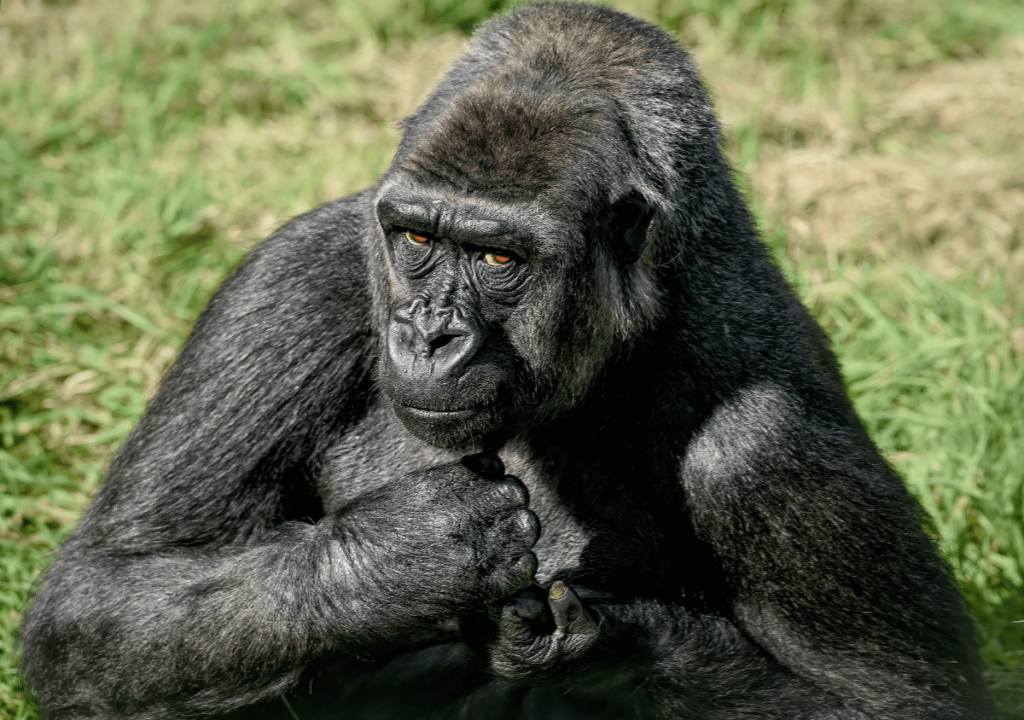
Description: The Western Lowland Gorilla is the smallest of the gorilla subspecies, known for its stocky build and deep, grayish-black fur. Found in the rainforests of Central Africa, it is the most numerous of all gorilla species.
- Common Name: Western Lowland Gorilla
- Scientific Name: Gorilla gorilla gorilla
- Family Name: Hominidae
- Type: Mammal
- Habitat: Tropical rainforests in Central Africa
- Diet: Herbivore; eats fruit, leaves, stems, and occasionally insects
- Current Status: Estimated 100,000 individuals left, but declining rapidly
- Reasons for Near Extinct: Poaching, habitat destruction, and diseases like Ebola
- Conservation Efforts: Anti-poaching measures, habitat preservation, and vaccination programs against diseases are crucial for their survival.
17. Yangtze Finless Porpoise
Description: The Yangtze Finless Porpoise is a freshwater porpoise native to the Yangtze River in China. It is known for its playful behavior and lack of a dorsal fin, making it unique among porpoises.
- Common Name: Yangtze Finless Porpoise
- Scientific Name: Neophocaena asiaeorientalis asiaeorientalis
- Family Name: Phocoenidae
- Type: Marine Mammal
- Habitat: Yangtze River, China
- Diet: Fish and shrimp
- Current Status: Approximately 1,000 individuals left
- Reasons for Near Extinct: Habitat degradation, pollution, and overfishing
- Conservation Efforts: Conservation actions include habitat protection, pollution control, and attempts at breeding in captivity.
18. Pinta Island Tortoise
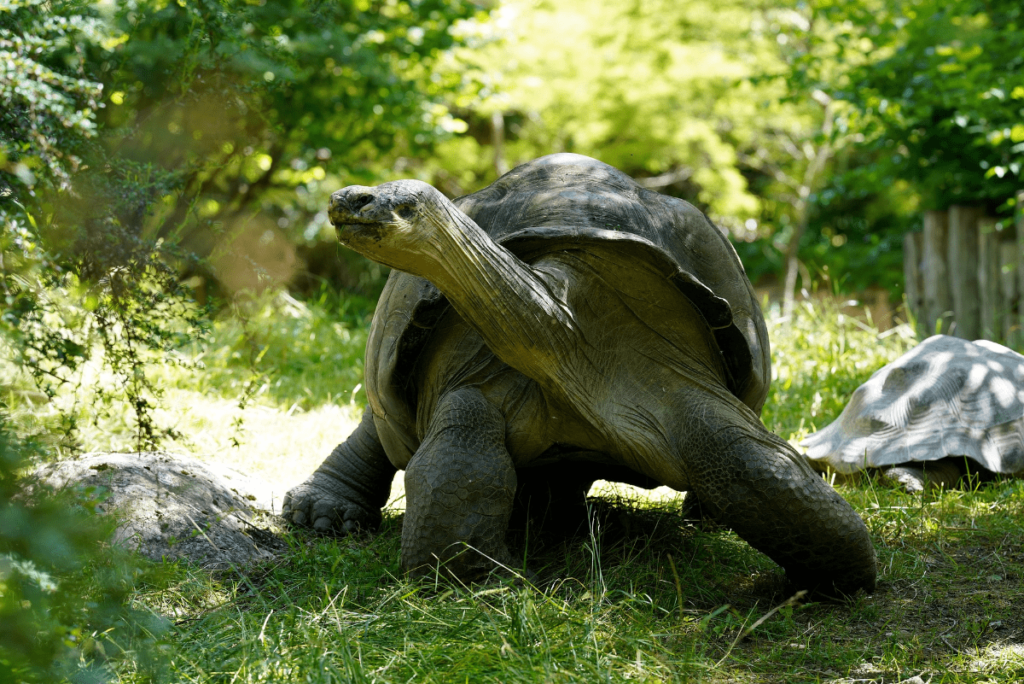
Description: The Pinta Island Tortoise was a subspecies of the Galápagos tortoise, which is one of the Longest Living Animals. The most famous individual, Lonesome George, was the last of his kind, and his death in 2012 marked the extinction of this species.
- Common Name: Pinta Island Tortoise
- Scientific Name: Chelonoidis abingdonii
- Family Name: Testudinidae
- Type: Reptile
- Habitat: Pinta Island, Galápagos Islands (formerly)
- Diet: Herbivore; fed on cacti, grasses, and leaves
- Current Status: Extinct
- Reasons for Extinction: Overexploitation by whalers and pirates, habitat destruction by introduced species like goats
- Conservation Efforts: Efforts now focus on the preservation and restoration of other Galápagos tortoise species and their habitats.
19. West African Black Rhinoceros
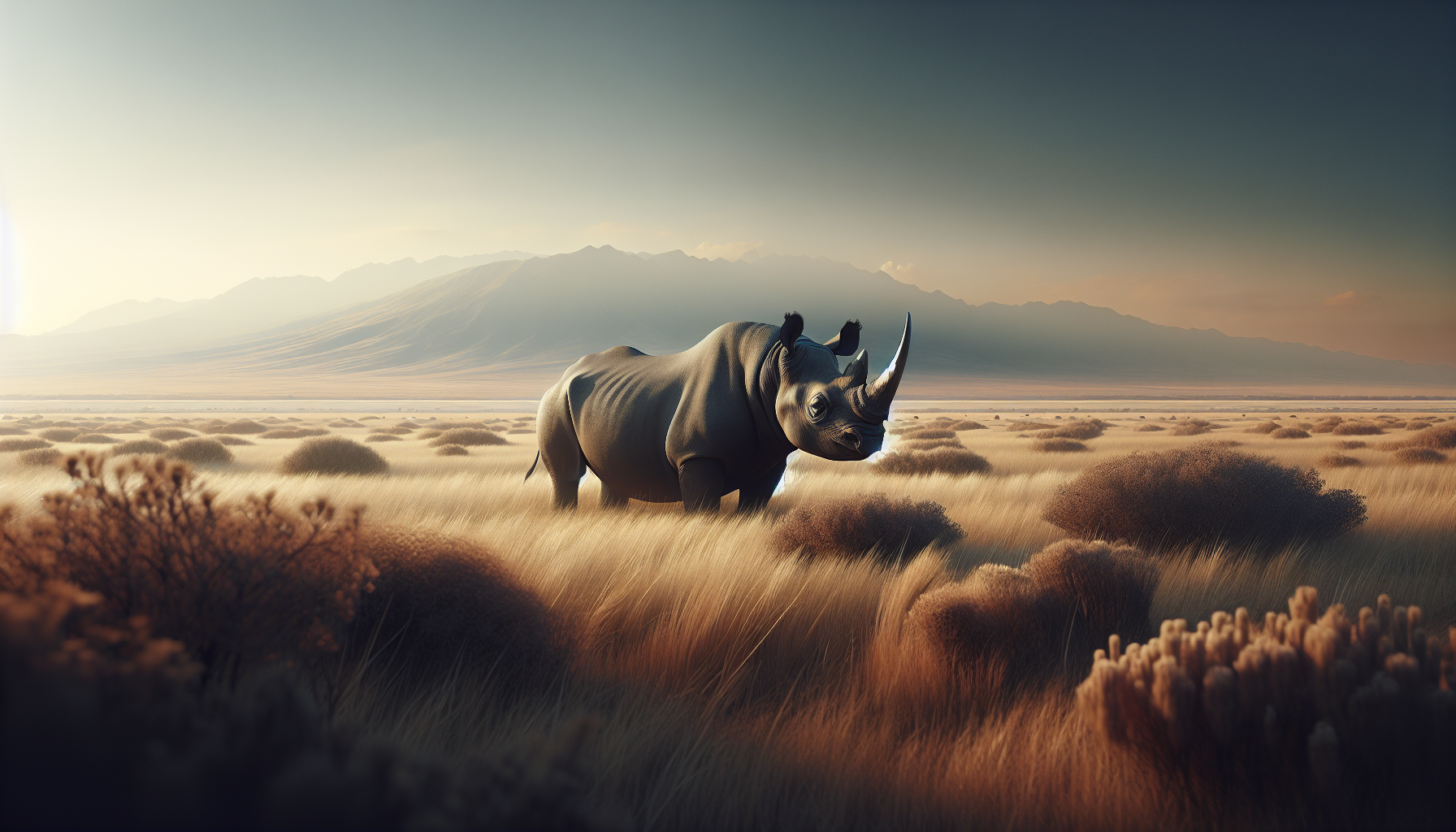
Description: The West African Black Rhinoceros was a subspecies of the Black Rhino, native to the savannahs of West Africa. The last confirmed sighting was in 2006, and it was declared extinct in 2011.
- Common Name: West African Black Rhinoceros
- Scientific Name: Diceros bicornis longipes
- Family Name: Rhinocerotidae
- Type: Mammal
- Habitat: Savannahs and shrublands of West Africa (formerly)
- Diet: Herbivore; fed on leafy plants and shoots
- Current Status: Extinct
- Reasons for Extinction: Intense poaching for horns, lack of adequate conservation efforts
- Conservation Efforts: Efforts now focus on protecting remaining Black Rhino subspecies across Africa.
20. Baiji
Description: The Baiji, also known as the Chinese River Dolphin, was a freshwater dolphin native to the Yangtze River. Declared functionally extinct in 2006, the Baiji was the first dolphin species driven to extinction by human activity.
- Common Name: Baiji (Chinese River Dolphin)
- Scientific Name: Lipotes vexillifer
- Family Name: Lipotidae
- Type: Marine Mammal
- Habitat: Yangtze River, China (formerly)
- Diet: Fish
- Current Status: Functionally extinct
- Reasons for Extinction: Industrialization, dam building, overfishing, and boat traffic
- Conservation Efforts: Efforts now focus on protecting the Yangtze ecosystem and its remaining species, like the Yangtze Finless Porpoise.
Animals Close to Extinction List:
| Common Name | Scientific Name | Family Name | Type | Habitat | Diet | Current Status | Reasons for Near Extinct |
|---|---|---|---|---|---|---|---|
| African Forest Elephant | Loxodonta cyclotis | Elephantidae | Mammal | Rainforests in Central and West Africa | Grasses, leaves, fruits | Approximately 30,000-40,000 | Habitat loss, poaching, human-wildlife conflict |
| Amur Leopard | Panthera pardus orientalis | Felidae | Mammal | Temperate forests in the Russian Far East and China | Carnivore (deer, hares) | Fewer than 100 individuals | Habitat loss, poaching, prey depletion |
| Black Rhino | Diceros bicornis | Rhinocerotidae | Mammal | Savannas, grasslands, and scrublands in Africa | Herbivore (leaves, shoots) | Approximately 5,000 individuals | Poaching for horns, habitat loss |
| Bornean Orangutan | Pongo pygmaeus | Hominidae | Mammal | Lowland and montane forests in Borneo | Fruits, leaves, bark | Approximately 55,000 individuals | Deforestation, illegal pet trade, habitat fragmentation |
| Cross River Gorilla | Gorilla gorilla diehli | Hominidae | Mammal | Forests along the Cameroon-Nigeria border | Fruits, leaves, stems | Fewer than 300 individuals | Habitat loss, poaching, human-wildlife conflict |
| Eastern Lowland Gorilla | Gorilla beringei graueri | Hominidae | Mammal | Montane forests in eastern Democratic Republic of the Congo | Fruits, leaves, stems | Approximately 5,000 individuals | Poaching, habitat loss, disease |
| Hawksbill Turtle | Eretmochelys imbricata | Cheloniidae | Reptile | Tropical coral reefs | Jellyfish, sponges | Fewer than 20,000 individuals | Illegal trade, habitat destruction, climate change |
| Javan Rhino | Rhinoceros sondaicus | Rhinocerotidae | Mammal | Ujung Kulon National Park in Indonesia | Herbivore (leaves, shoots) | Approximately 80 individuals | Habitat loss, poaching, human-wildlife conflict |
| Orangutan | Pongo pygmaeus (Bornean), Pongo abelii (Sumatran) | Hominidae | Mammal | Rainforests in Borneo and Sumatra | Fruits, leaves, bark | Bornean: ~55,000; Sumatran: ~14,000 | Deforestation, illegal pet trade, habitat loss |
| Saola | Pseudoryx nghetinhensis | Bovidae | Mammal | Annamite Mountains, Vietnam and Laos | Leaves, stems, grasses | Fewer than 100 individuals | Hunting, habitat loss due to agriculture |
| Sumatran Elephant | Elephas maximus sumatranus | Elephantidae | Mammal | Lowland forests in Sumatra, Indonesia | Grasses, leaves, fruits | Approximately 2,400-2,800 | Deforestation, illegal poaching, habitat destruction |
| Sumatran Orangutan | Pongo abelii | Hominidae | Mammal | Tropical rainforests in Sumatra | Fruits, leaves, bark | Approximately 14,000 individuals | Deforestation for palm oil plantations, illegal hunting |
| Sumatran Rhino | Dicerorhinus sumatrensis | Rhinocerotidae | Mammal | Tropical rainforests and swamps in Sumatra | Herbivore (leaves, fruits) | Fewer than 80 individuals | Poaching, habitat loss |
| Sunda Tiger | Panthera tigris sondaica | Felidae | Mammal | Lowland and montane forests in Sumatra | Carnivore (deer, wild boar) | Around 400-600 individuals | Habitat loss, poaching, human-wildlife conflict |
| Vaquita | Phocoena sinus | Phocoenidae | Marine Mammal | Northern Gulf of California, Mexico | Fish, squid | Fewer than 10 individuals | Bycatch in gillnets, habitat degradation |
| Western Lowland Gorilla | Gorilla gorilla gorilla | Hominidae | Mammal | Tropical rainforests in Central Africa | Fruits, leaves, stems | Approximately 100,000 individuals | Poaching, habitat destruction, diseases like Ebola |
| Yangtze Finless Porpoise | Neophocaena asiaeorientalis asiaeorientalis | Phocoenidae | Marine Mammal | Yangtze River, China | Fish, shrimp | Approximately 1,000 individuals | Habitat degradation, pollution, overfishing |
| Pinta Island Tortoise | Chelonoidis Abingdon | Testudinidae | Reptile | Pinta Island, Galápagos Islands (formerly) | Herbivore (cacti, leaves) | Extinct | Overexploitation, habitat destruction |
| West African Black Rhinoceros | Diceros bicornis longipes | Rhinocerotidae | Mammal | Savannahs and shrublands in West Africa (formerly) | Herbivore (leaves, shoots) | Extinct | Poaching for horns, insufficient conservation efforts |
| Baiji | Lipotes vexillifer | Lipotidae | Marine Mammal | Yangtze River, China (formerly) | Fish | Functionally extinct | Industrialization, dam building, overfishing |
Factors Contributing to Extinction
The primary drivers of near extinct animals are well-known: habitat loss due to human expansion, poaching for illegal wildlife trade, pollution, and climate change. For example, deforestation in Southeast Asia has significantly reduced the habitat of the Sumatran Orangutan, pushing this species close to extinction. Similarly, the Amur Leopard’s population has been decimated by poaching and habitat loss, leaving fewer than 100 individuals in the wild.
The Role of Conservation
Conservation efforts are crucial in preventing these animals from disappearing entirely. Organizations worldwide are working tirelessly to protect these species through initiatives like anti-poaching patrols, habitat restoration, and breeding programs in captivity. For instance, the Kakapo Recovery Program in New Zealand has made significant strides in increasing the population of this flightless parrot, which was once on the verge of extinction.
Explore this article on Endangered Species Status Changes to discover which animals have moved from endangered to non-endangered status thanks to successful conservation efforts.
What Can Be Done?
While global conservation efforts are vital, individuals can also play a role in protecting these animals. Supporting organizations that work to conserve wildlife, reducing one’s carbon footprint, and spreading awareness about the plight of these species are all actionable steps. Understanding what species are close to extinction and advocating for their protection can make a significant difference in the fight against biodiversity loss.
Conclusion and Steps to Save These Animals
In conclusion, the animals listed here are on the brink of extinction, and their plight underscores the urgent need for conservation action. To help save these species, we must:
- Support Conservation Organizations: Contribute to and volunteer with organizations working to protect endangered species.
- Advocate for Policy Changes: Support policies that protect wildlife habitats and enforce anti-poaching laws.
- Raise Awareness: Educate others about the importance of wildlife conservation and the threats faced by these species.
- Reduce Our Footprint: Make environmentally conscious choices to reduce habitat destruction and pollution.
- Participate in Citizen Science: Engage in local conservation projects and report sightings of endangered species to contribute to their monitoring and protection.
By taking these steps, we can contribute to the survival of these remarkable species and ensure that future generations will also have the opportunity to appreciate their beauty and significance.
The fate of animals close to extinction is a reflection of the broader environmental challenges facing our planet. As we witness the decline of these critically endangered animals, it becomes increasingly clear that urgent action is needed.
Conservation is not just about saving individual species; it’s about preserving the ecosystems and biodiversity that sustain all life on Earth. By understanding the severity of the situation and supporting conservation efforts, we can help ensure that these nearly extinct animals don’t become mere memories.
